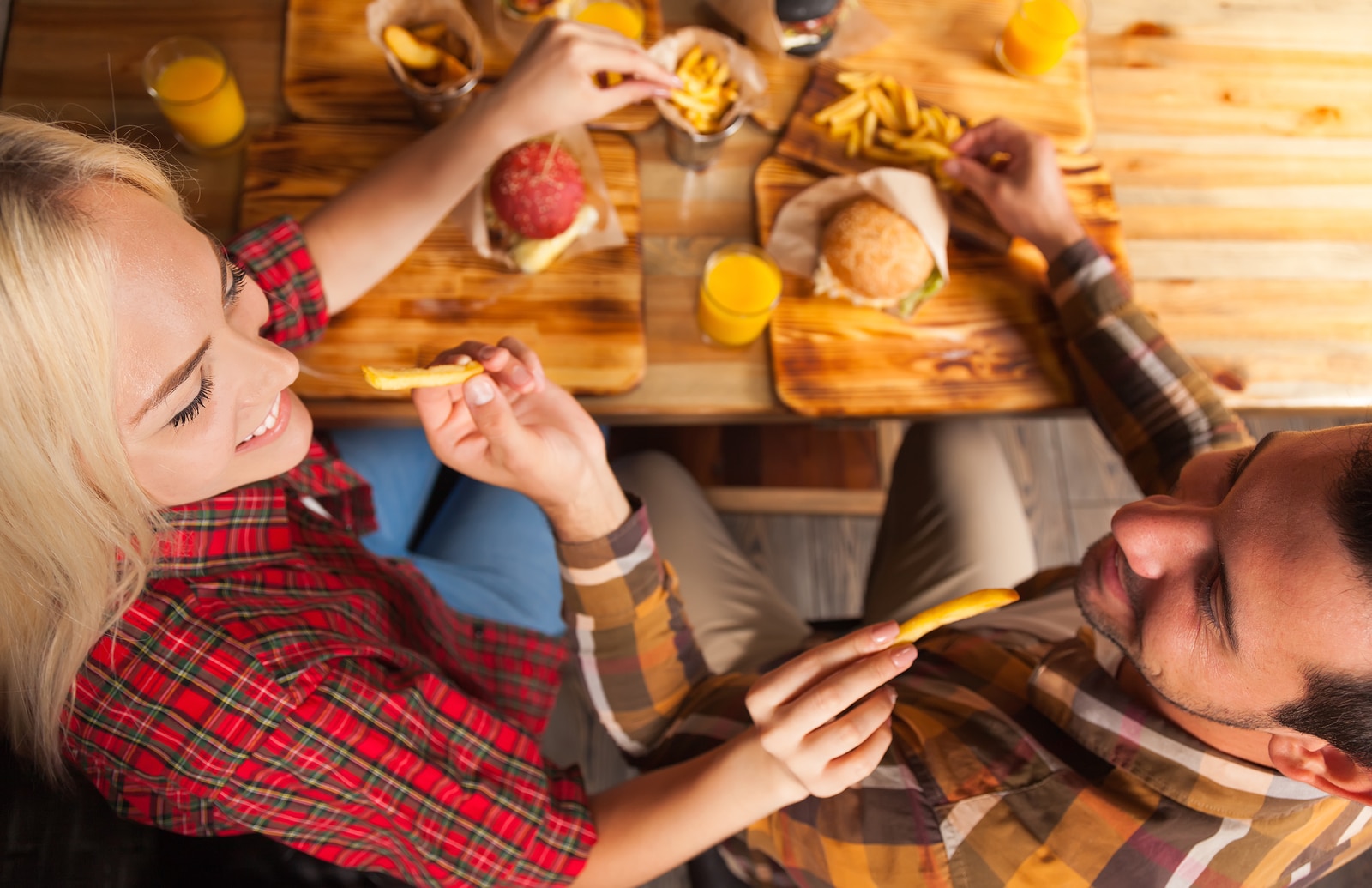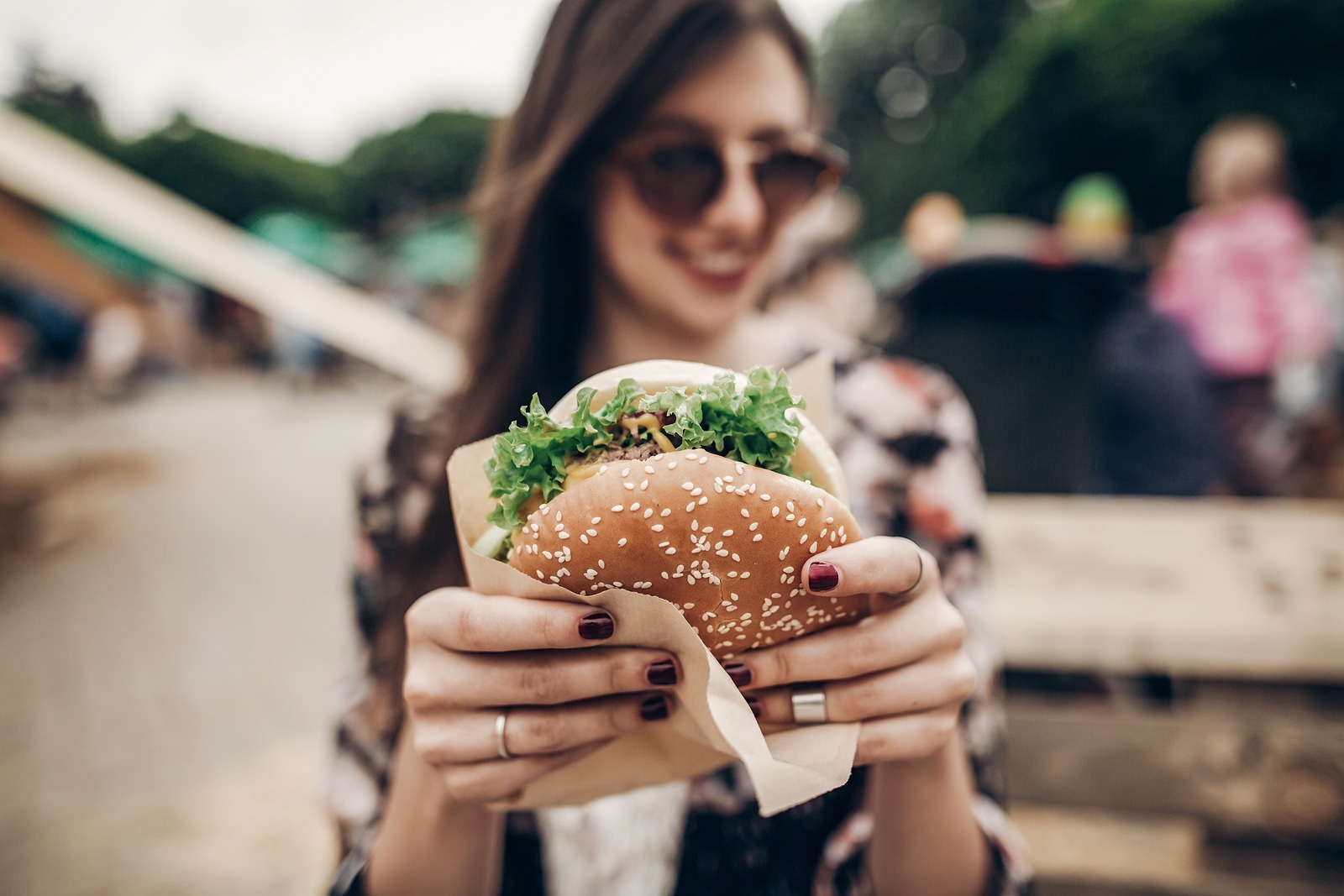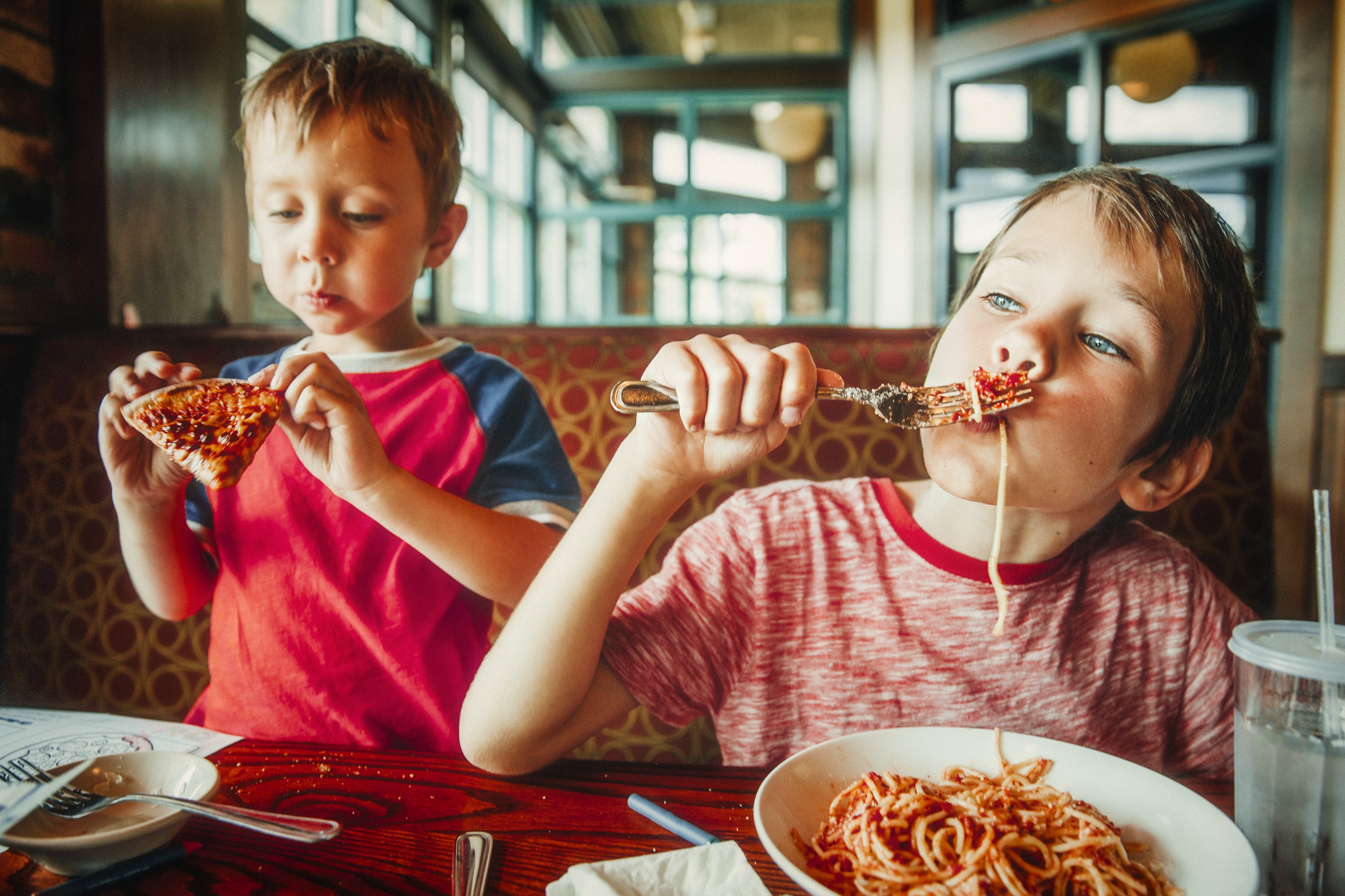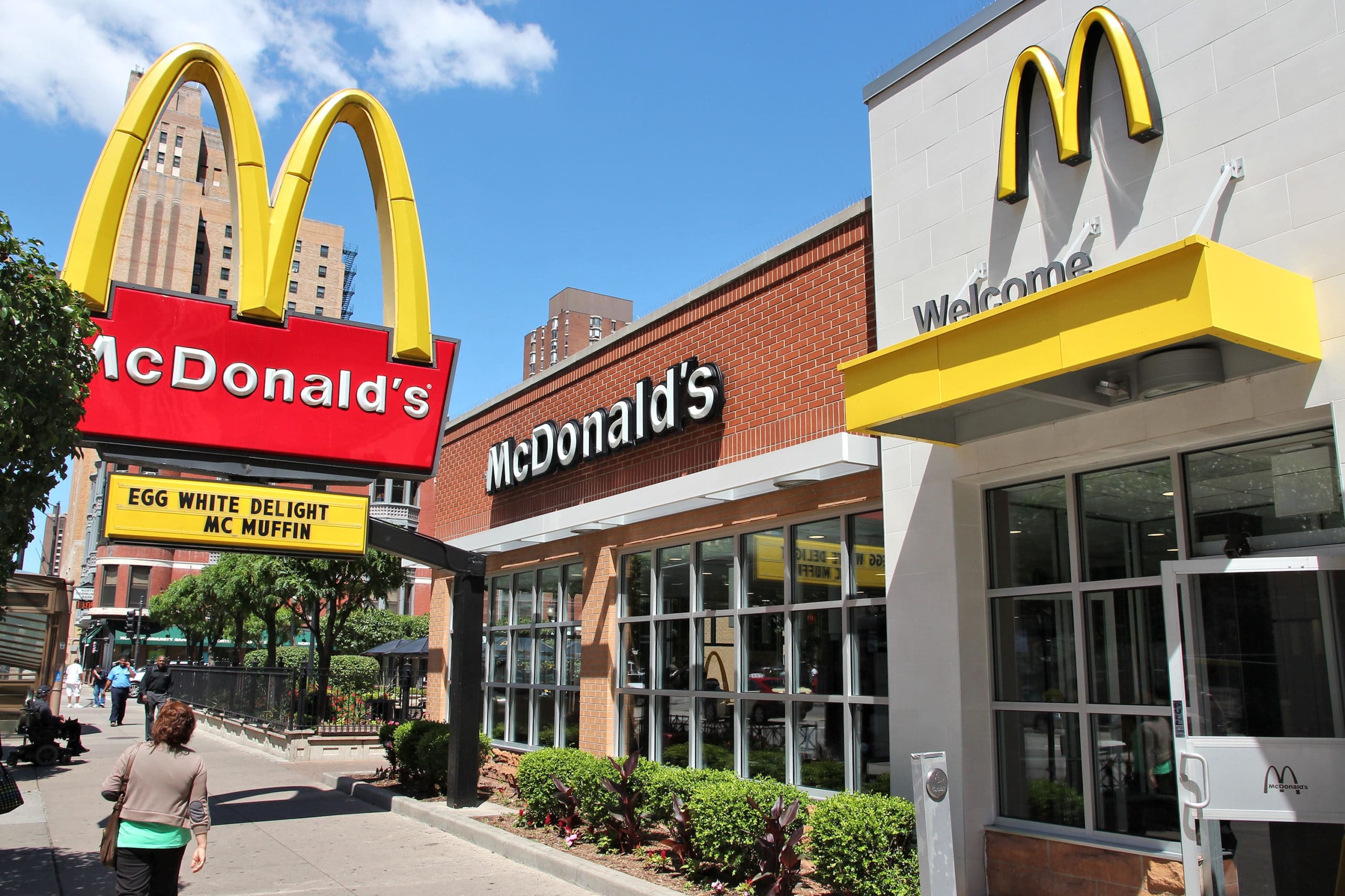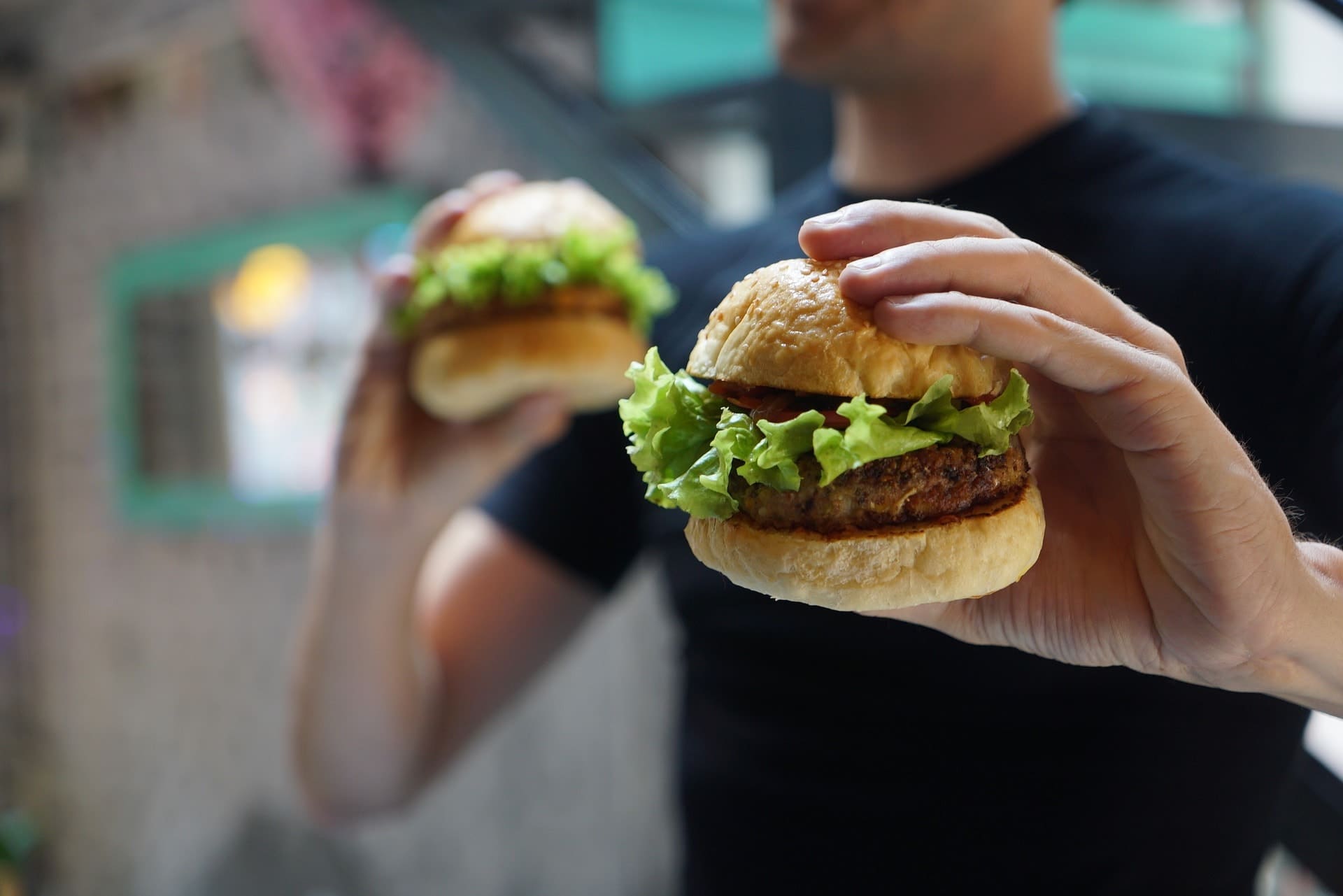This year, the most effective fast food marketing strategies have relied heavily on technology to meet customer demand. Continue reading “The top 3 fast food marketing strategies for 2018”
Category: QSR
Understanding millennial spending habits as a QSR marketing professional
When it comes to millennial spending habits, quick service restaurants (QSR) are in a strong position. Millennials are more willing than other generations to eat out, with 79% reporting they regularly spend money eating at restaurants. As such, their habits are influencing how QSRs market their offerings. QSR marketing professionals need to understand millennials’ unique spending habits to best serve this market of consumers.
 Millennials offer a lot of opportunities for QSRs: They’re adventurous and willing to try new experiences when it comes to food. They view food as an experience, rather than mere fuel, and 81% of millennials report they examine new cultures through food. QSRs must also be willing to offer variety, affordability, and technology to truly connect with the millennial consumer.
Millennials offer a lot of opportunities for QSRs: They’re adventurous and willing to try new experiences when it comes to food. They view food as an experience, rather than mere fuel, and 81% of millennials report they examine new cultures through food. QSRs must also be willing to offer variety, affordability, and technology to truly connect with the millennial consumer.
Millennials: Open-minded and Seeking
Millennials don’t just view food as a necessity, they see it as an experience. QSRs must be prepared to deliver some kind of tasting experience through their food, and they need to highlight that in their marketing strategies. There are many ways to create a dining experience, including:
- Over the top: Millennials are more than willing to try items that might be seen as indulgent. About 63% of millennials report they enjoy it when a brand offers an over-the-top menu item.
- Cultural cuisine: Millennials are interested in exploring new cultures through cuisine. The recent emergence of QSRs focused on new cultural offerings, like Hawaiian and Indian foods, which were traditionally underrepresented in the QSR industry, seeks to address this interest.
- Nostalgia: Comfort food also attracts millennials who want to re-experience flavors from their childhood. About 69% of millennials wish brands would offer foods designed to remind them of their youth.
Millennials are adventurous eaters, which means QSR managers for offbeat chains have an even greater opportunity to attract new consumers in the cohort. Keep in mind, however, that millennials remain highly focused on convenience.
The Millennial Quest for Quick and Convenient
Millennials snack more than their other generational counterparts. That leads to a lot of opportunity in the QSR market, as these restaurants are uniquely positioned to provide snack foods in a hurry. We’ve already seen several brands move to leverage this through:
- Healthy-focused offerings: Millennials want to eat healthy, with about 67% reporting they seek healthy options at restaurants. Giving them a menu of quick, light snacks goes a long way towards gaining their loyalty.
- On-the-go options: Millennials tend to eat on their feet, in that they’re eating while going somewhere, or at their desks, or simply while walking down the street. Foods like wraps that consumers can eat on the go are great options.
- Multitask ready locations: While most millennials will eat off-premise, those who stay at a restaurant expect to have access to technology like WiFi, televisions and other display screens to keep them entertained. Using technology to enhance the QSR customers experience is becoming a necessity for restaurants seeking to cater to millennials.
On-the-go millennial consumers want to be able to eat quickly, yet when they do take time to sit down, they want to be entertained. Many QSRs are turning to technology to help in both improving the ordering process and in offering more in-restaurant entertainment options.
Maximizing on Millennial Spending Habits with Tech Driven Ordering Options
Millennials grew up with computers in their homes and came of age with the Internet, meaning that technology is an important part of their lives. In recent years, that need for tech has expanded into the QSR sector, as millennials seek out ways to make the ordering process more convenient.
Many QSRs have rolled out options to allow consumers to order via mobile phones and pick up their waiting order in person. These consumers can even pay by phone, further reducing wait times. As options like Uber Eats—a food delivery service that uses the ride-sharing app—become more popular, QSRs can even use them to offer delivery in new locations.
By leveraging mobile app advertising options, like shopping apps, QSRs can connect with millennials as they’re on the go
Another thing mobile technology can provide QSR marketing managers is marketing strategies with great potential for ROI. By leveraging mobile app advertising options, like shopping apps, QSRs can connect with millennials as they’re on the go and even share information on new products and offer rewards. With Shopkick, for example, a QSR can give a consumer rewards points just for walking in the door and can provide additional points for making certain purchases, all through a mobile-based platform.
Millennials are a very lucrative target market for QSRs because of how much money they spend eating out. They’re also willing to try new things, making it easier for brands to attract their attention—provided they offer millennials convenience and technology-based ordering. By using shopping apps, QSRs can even better capitalize on millennial spending habits and improve brand recognition and sales.
Shopkick helps our partners connect with millennial consumers as they’re on the go through our innovative app. To use our app to reach them, contact us.
Image courtesy Sonjachnyj
App-based fast food advertising: Is the ROI worth the cost?
Fast food advertising is competitive, and not just for converting customers: Given the sea of competition, it can be a challenge just to get your advertisement viewed by consumers in the first place. Nearly $1.5 billion was invested in fast food advertising in 2016, and that number is steadily growing. Many marketers in the industry are seeking ways to stand out among the noise. One of the ways they’re doing this is through app-based fast food advertising.
 App-based advertising offers some advantages that other advertising methods don’t. This is especially true in the fast food industry, where a QSR (quick service restaurant) might have only seconds to grab a customer’s attention.
App-based advertising offers some advantages that other advertising methods don’t. This is especially true in the fast food industry, where a QSR (quick service restaurant) might have only seconds to grab a customer’s attention.
Increasing Customer Control With App-Based Fast Food Advertising
One unique QSR concept was a brand called Eatsa. The restaurant was almost fully automated, and some believed that would change the QSR customer experience. While Eatsa grew a bit too quickly and outpaced demand, there are still some valuable things we can learn from it.
Customers at Eatsa ordered and paid via an iPad. Their order transferred to a kitchen staff who prepared the food and placed it in a glass cubicle for pickup. Throughout the entire process, the customer had no interaction with any employee. This unique concept was a bit much for the public at the time; however, it did incorporate one major theme of the future of QSRs: increasing customer control through technology.
App-based advertising follows this customer empowerment theme as consumers have more control over when they’re exposed to advertisements, what advertisements they watch, and where they watch them. Because consumers must grant the apps permission to reach out to them, they are in the driver’s seat. It’s also more likely consumers will then perceive an ad as something they’ve chosen to view, rather than as a disruption. These “opt-ins” are very important to QSR mobile marketing strategies because they create a connection with an engaged customer.
Using Gamification to Garner Opt-Ins and Improve Customer Engagement
To take the consumer connection one step further, consider gamifying your app-based advertising. Gamification is a way of taking a non-game and giving it a game-like feel; it’s also become a huge component of mobile apps. Blimpie’s Blimpie Run campaign is a great demonstration of one successful application in QSR.
The QSR’s goal was to increase adoption of its customer loyalty program. They set up a game app that allowed users to navigate a Blimpie’s-based world as the character Del E. Fresh. When downloading the app, users were asked, but not required, to opt-in to the Blimpie eClub, which they did in impressive numbers. The company saw a 38% opt-in rate, far exceeding the 2 to 10% opt-in rate of previous campaigns.
An app doesn’t have to be entirely game-based, but basic gamification components can have a large impact.
- Motivation: Users are seeking out rewards, whether it be money, recognition, or just a feeling of personal accomplishment. In an app, the motivation might be a desire for deals or rewards program points that are exclusive to users of the app.
- Mastery: This is the challenge part of the game. Contrary to popular belief, consumers don’t want something for nothing. They want to feel as though they’ve earned something through a challenge. A good example of this is the Shopkick shopping rewards app. In Shopkick, users are rewarded for finding, scanning, and purchasing certain items with points—called kicks—which can later be exchanged for gift cards.
- Triggers: The trigger is the event that creates the positive effect, which causes the user to associate the event with a positive experience. With an app, a user’s smartphone may ding or buzz to notify them that they’re near an opportunity to earn rewards. This notification sound will trigger a positive feeling in them which drives them to begin using the app.
If conversion is the main goal in using mobile apps for your fast food advertising campaign, then gamification will give you the strongest ROI. Games resonate with consumers, get them to engage with your brand, and create a positive connection which ultimately boosts sales.
Using Mobile Apps to Time Fast Food Advertising
The thing that has the highest conversion potential in fast food advertising is reaching your consumer at the right time. For example, someone seeing a commercial about an all-you-can-eat rib deal at a local eatery at 10 a.m. probably isn’t going to be interested. However, if they see that same deal as a takeout special announced on an app on their way home from work, then that has conversion potential.
That’s because the message reaches those consumers at the moment when they’re in the kind of mindset to visit a QSR. Receiving a notification via the app can help lead them to timely purchase. This is something that’s unique to mobile apps. No other medium allows you to reach your consumer at the very moment when they traveling near one of your locations—during a time when they’re likely in a buying mindset—with such incredible precision and thus offer such a high potential for conversion.
No other medium allows you to reach your consumer at the very moment when they traveling near one of your locations—during a time when they’re likely in a buying mindset—with such incredible precision.
Mobile apps allow you to reach out to traveling consumers, enable you to engage consumers through gamification, and empower consumers to choose the advertising they view. All of these aspects of app-based fast food advertising, executed effectively, combine to deliver an increased ROI.
If you’re considering a mobile app to pull more customers into your restaurants, consider Shopkick’s rewards-based platform. We partner with a wide range of QSRs to incentivize consumers and reach out to them when they’re likely to make a purchase. For more information, contact us.
Image courtesy fizkes
The fast food advertising statistics every QSR marketing manager must know
The quick service restaurants (QSR) industry used to be one we thought of as tech-proof.
Continue reading “The fast food advertising statistics every QSR marketing manager must know”
The fast food industry growth statistics that should shape your advertising strategies
Fast food is a high growth industry. Currently, the US market for fast food is worth about $200 billion and nearly half of all consumers get take out or fast food at least once a week. Continue reading “The fast food industry growth statistics that should shape your advertising strategies”
The QSR marketing strategies with the greatest potential ROI
When it comes to QSR marketing strategies, the best potential return on investment can be achieved by reaching consumers at the right moment. Continue reading “The QSR marketing strategies with the greatest potential ROI”
Fast food advertising budgets: How your QSR brand can compete for less
Fast food is one of the most highly advertised consumer-facing markets in the world. Recent figures indicate that $4.6 billion is spent on fast food advertising annually in the US alone. The reasons behind why this segment advertises so heavily are high competition coupled with a limited window of opportunity. Consumers make fast food decisions in the moments right before they buy, which means that all the advertising in the world isn’t going to reach them if it’s done at the wrong time. A fast food advertising budget, then, can be stretched when you focus not on the quantity of your advertisements, but on the timing instead.
 While the high degree of competition is a challenge for quick service restaurants (QSRs), they also have a unique opportunity: they can leverage mobile technology to easily target their consumers when they’re most likely to stop at a fast food franchise. This is something accomplished through mobile moments, as smartphones that travel with consumers are the best way to reach out to them while they are on-the-go. Instead of sinking a high percentage of your precious advertising dollars into a widespread, scattershot campaign, you can instead market smarter by traveling with the consumer.
While the high degree of competition is a challenge for quick service restaurants (QSRs), they also have a unique opportunity: they can leverage mobile technology to easily target their consumers when they’re most likely to stop at a fast food franchise. This is something accomplished through mobile moments, as smartphones that travel with consumers are the best way to reach out to them while they are on-the-go. Instead of sinking a high percentage of your precious advertising dollars into a widespread, scattershot campaign, you can instead market smarter by traveling with the consumer.
Use Your Fast Food Advertising Budget to Focus on Mobile
App-based advertising is capable of reaching consumers as they’re near a QSR location or looking for a place to eat. This can be a better alternative to social media for many fast food companies as this form of advertising reaches consumers when they’re in a buying state of mind.
Domino’s is a brand that has fully embraced app-based advertising. In 2010, they became early adopters of the technology and began focusing heavily on mobile advertising via apps. By 2015, the brand saw a 19% increase in sales and reported more than half of their orders were made via mobile devices. For 25 consecutive quarters, the brand saw increases in sales. Domino’s did this by essentially going all in on digital with their fast food advertising budget. Specifically, the company:
- Offered mobile orders, payments, and tracking: Consumers can use the mobile device for all stages of the ordering process, from beginning to end. There’s even an optional tracker that allows consumers to see when they can expect their food to be delivered.
- Integrated its rewards system: Domino’s has fully integrated their QSR rewards program into their app, meaning users are automatically credited with points.
- Personalized the experience: On the tracker, consumers can see the name of the person making their food, what time the driver left the store, and can even leave a message for the location.
- Target upsell opportunities: When using the Domino’s app, several options will be suggested to the consumer prior to check-out based on their order history, such as desserts, drinks, or sides.
Domino’s essentially took a mobile-first approach to their advertising budget. It was a risky move, but it worked to their benefit. Of course, it was costly upfront, as developing a proprietary app for a QSR mobile advertising strategy can be quite expensive. For brands that are looking for a way to integrate mobile app marketing while limiting their initial costs, an alternative can be found in partnering with a third-party shopping app.
Budget Saving Advertising Alternatives to In-House App Development
When your fast food advertising budget is limited, an ideal way to take a mobile-first approach is to work with a third-party app that is well established. Shopping apps, specifically, are good tools to make the most of your advertising dollars while minimizing the direct cost to your budget.
When considering a third-party app partnership, look for apps that offer:
- A high number of active users: One of the benefits of using a third-party app is that you don’t have to worry about driving adoption. The app should come with a built-in audience of active and engaged users within your target audience.
- Proximity marketing: Proximity marketing allows you to communicate with a mobile user when they’re close to one of your locations. This strategy can determine signals of purchase intent and use them effectively, increasing the chance of reaching that consumer as they’re about to make a dining decision.
- A rewards-based system: The best shopping apps won’t be dependent on offering deals or coupons to get consumers to buy your product. Instead, they’ll offer rewards, such as points for making a purchase. This incentivizes buyers without forcing you to discount your items.
Partnering with an established shopping app can allow you to take advantage of all of the benefits of mobile advertising without the high expense of developing an app in-house. This can be a good way to stretch your fast food advertising budget while increasing your ROI.
A high-performing mobile campaign can be a powerful converter for QSRs, especially when you consider how important it is to be able to travel with your consumers. Consumers make fast food decisions quickly, which means you must also be mobile in order to reach them at that pivotal moment.
Shopkick helps our partners leverage mobile technology to reach an engaged target audience. If you’re interested in learning how far your advertising budget can go when partnering with a third-party app, contact our team today to learn more.
Image courtesy Baramee
QSR customer experience: How mobile apps are enhancing restaurant visits
A positive, memorable QSR customer experience can turn a casual visitor into a restaurant regular. However, QSR companies are challenged with the limited time they have to spend with their customers. The focus of the visit is a fast, convenient meal, but the in-restaurant experience is what will either drive them to return or to seek other options in the future. How, then, does a QSR location create a positive and memorable customer experience in the limited window that a typical customer will spend in the restaurant?
QSRs must take advantage of mobile app technology to enhance in-person interactions and drive value for consumers beyond simply a quick and low-cost meal. Marketing professionals looking to create a memorable QSR customer experience must be prepared to deliver that experience rapidly and in a manner that is easy to interact with while on the go. More than a few QSR brands have managed to get this right by offering engaging mobile apps. Let’s explore ways your QSR company can model the most crucial techniques of these successful mobile marketing strategies.
Using Technology That Matters to Customers to Drive Positive Experiences
Many marketing professionals are surprised to learn just how important mobile technology is for QSR customers in the digital age. In a National Restaurant Association study, one-quarter of QSR customers state that technology was a factor in their decision to visit a restaurant.
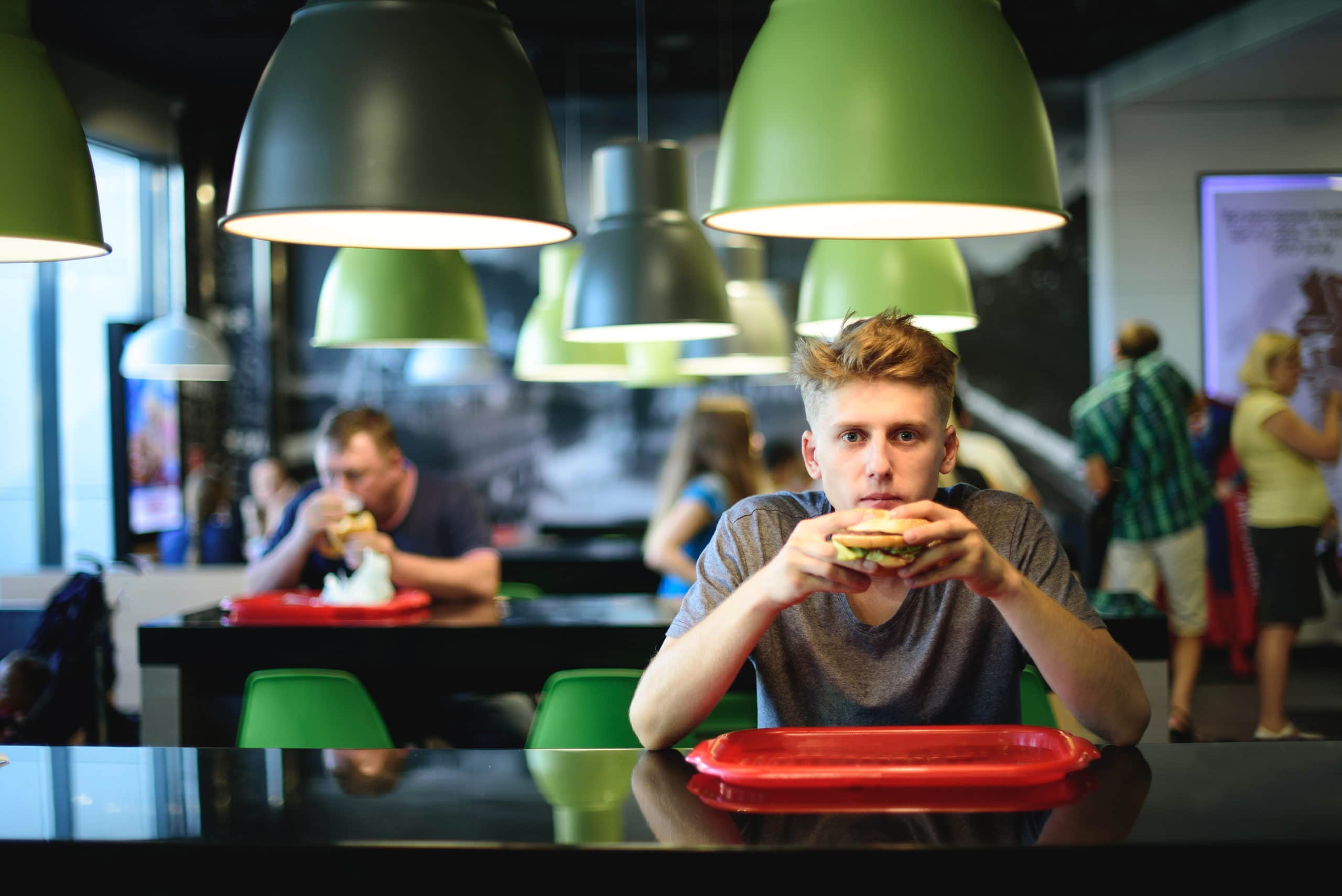
Some suggestions for how a QSR company can interact with its customers during a visit are:
- Increased personalization: Your Pie is a QSR that focuses on custom pizzas for its customers. They keep a history of all orders placed via their app so that they can use it to inform on future selections. So, for example, if a customer ordered a gluten-free pizza in the past, and the company came out with a new gluten-free menu item, they can target those specific customers with marketing for their new product. This increases the personalization of the interaction with the QSR. The consumer will feel like the app understands what’s important to them and is designed to cater to them.
- Rewards management: In the past, Dunkin Donuts used a card-based rewards system. In 2014, the brand rolled out a new mobile-based program and saw its participation numbers rapidly increase. Their app has garnered 10 million downloads and has significantly increased the company’s revenue. They have seen rewards upsells be particularly profitable. When a customer uses the mobile app in-store to redeem a free coffee, for instance, they’ll very likely buy another menu item in addition to redeeming those points for something. Making it easy for a customer to cash in on rewards also makes it easy for them to spend more while in your restaurant.
- Deliver branded content: Companies can encourage a greater customer connection to their QSR through branded content within an app. Panera Bread uses branded content to improve customer relations. Content that’s directly related to a customer’s prior purchases is displayed to them via the restaurant’s app. So, if the consumer ordered an apple fritter in the past, they might see an article about apples. If they like spicy food, the company will share content about exotic spices and the countries they come from. This is a clever way to use branded content while also keeping customers engaged during their visit.
The window that QSR companies have to make an impression is short, which is why Your Pie, Dunkin Donuts, and Panera have each designed their apps to work quickly and be used while their customers are waiting in line. Failure to deliver a timely message could cost your company a sale. Thankfully, this is where geolocation technology comes in.
Why Location Technology is Key for the QSR Customer Experience
Even the best mobile campaign will fail to gain customer interaction if the timing isn’t right. This is where beacons can be used to capitalize on perfect timing and create a better QSR customer experience. When you’re trying to enhance your in-store marketing, you want to be able to automatically note when a customer has entered or is near a location. Location technology, such as beacons, makes this possible.
Beacons, for example, work with mobile apps to help provide a positive QSR customer experience via:
- Push notifications: Push notifications can be used to remind a customer that they have downloaded your app and can use it to benefit themselves, such as by taking advantage of a promotion.
- Improved retargeting: A customer can allow a company to gain information from prior purchases and other app-related details. A QSR can then use that information for retargeting, such as creating recommendations based on location. This is not something that’s possible without geolocation technology.
- Managing store traffic patterns: Technology like beacons can also be used to better determine peak times and customer behaviors, as well as determining purchase intents that drive sales. These insights can be collected via mobile devices teamed with a beacon, and that data can be used to advise on everything from future marketing plans to staffing needs and store hours.
Geolocation technology is a critical aspect of creating engagement via mobile while a customer is in your restaurant as they allow you to gain data and insights on customer behavior. You can, in turn, use that information to improve the customer experience. If, for example, you notice a peak wait time at 1 pm on weekdays, you can then increase staffing, or add other options like mobile ordering, to improve QSR customer experiences.
Mobile apps make this new wave of marketing in the digital era possible. The stories of the QSRs above who have taken advantage of app technology all showcase examples of how QSR companies can easily leverage mobile apps and beacons to improve services, gain greater customer interaction, and offer greater value to their restaurant visitors. This is possible even when time is limited as mobile can conveniently connect with those customers the second they walk through your doors—quickly enough to create a memorable QSR customer experience.
Shopkick helps partners leverage beacons and other geolocation technology to improve the customer experience for QSR companies. If you’re interested in seeing what this unique technology can do for your restaurant, contact our team today.
Image courtesy BodnarPhoto
Proximity marketing: Best practices for QSR companies
Proximity marketing is a powerful but complicated process for new and established quick service restaurants alike. Continue reading “Proximity marketing: Best practices for QSR companies”
QSR Mobile Advertising: A Proven Strategy for the Digital Marketing Age
In the quick-service industry, your brand must live up to its name when it comes to marketing by focusing on being in the moment with your customers.
Continue reading “QSR Mobile Advertising: A Proven Strategy for the Digital Marketing Age”

